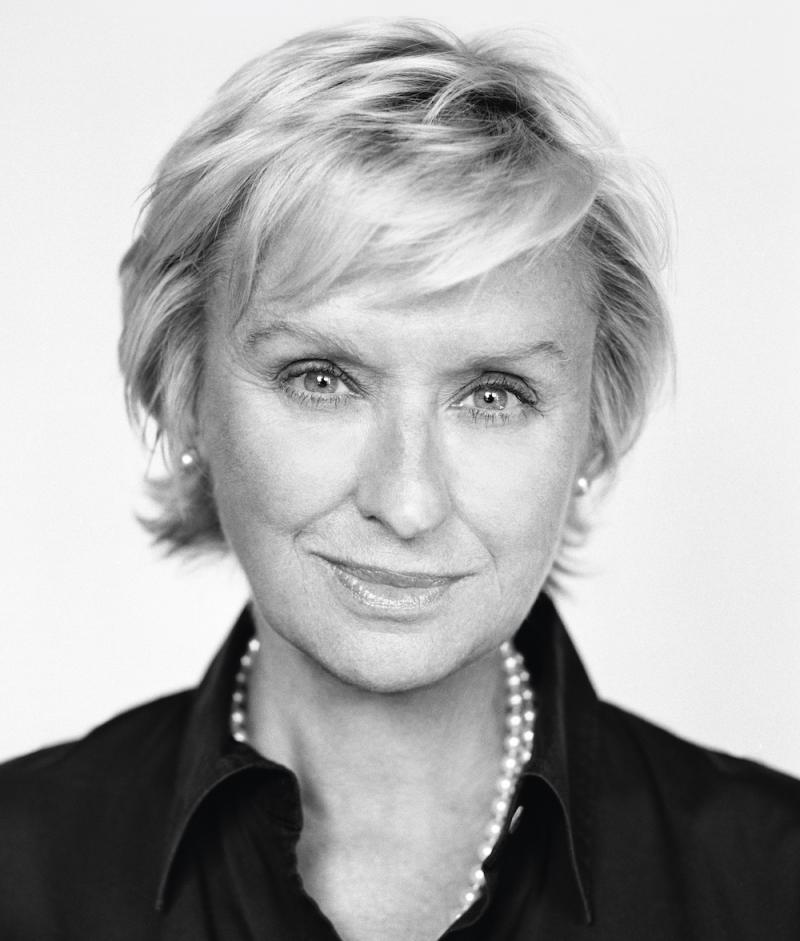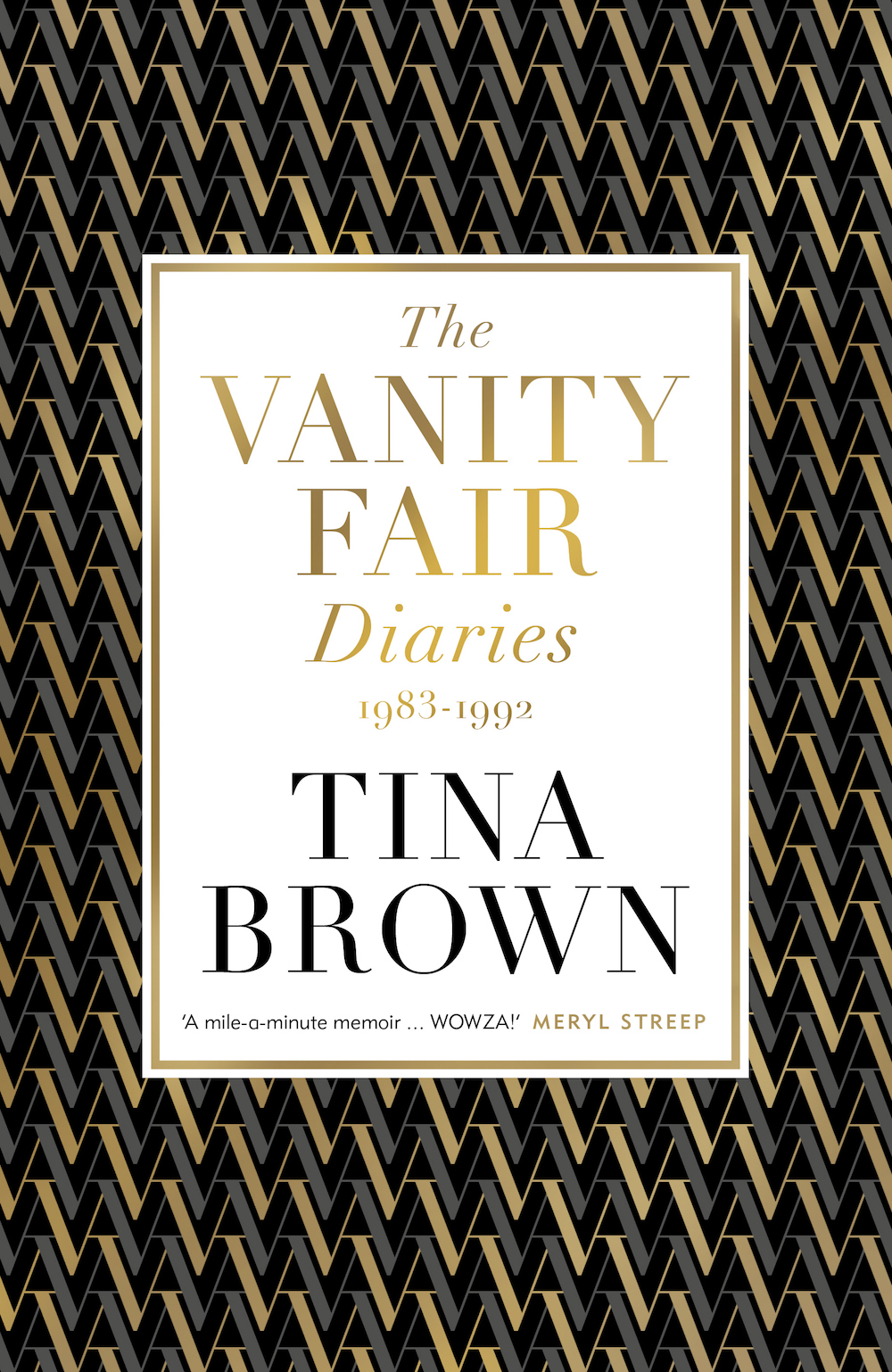Tina Brown: The Vanity Fair Diaries 1983-1992 review - portrait of an era of glitz and excess | reviews, news & interviews
Tina Brown: The Vanity Fair Diaries 1983-1992 review - portrait of an era of glitz and excess
Tina Brown: The Vanity Fair Diaries 1983-1992 review - portrait of an era of glitz and excess
Fun, frenzy and unexpected honesty from a legendary editor

Tina Brown’s first Christmas issue of Vanity Fair in 1984 had this to say about “the sulky, Elvisy” Donald Trump: “…he’s a brass act. And he owns his own football team. And he thinks he should negotiate arms control agreements with the Soviet Union.”
Trump stalks these gripping, funny pages like a virus (and indeed, AIDS is just tightening its grip on New York). In 1990 a damning piece in VF reveals he has a collection of Hitler’s speeches in his office; the last entry of 1991 has him pouring a glass of wine down the writer’s back at a party in revenge and then sneaking away. The diaries – a lifelong habit, even a need, says Brown – were written in the heat of the moment, though edited for publication (Brown’s daughter Isabel, who works for Vice Media, offered “essential millennial bafflement about people I assumed everyone knew”). No one escapes. “Boris Johnson is an epic shit. I hope he ends badly” (July 3, 1986). Princess Diana – Brown's always strong on royals – is "both brilliantly instinctive and dispiritingly dim" (August 2, 1985).
 Brown, who was just 30 when she took over as editor of the magazine, is brilliant at nailing Eighties icons such as Henry Kissinger (“a rumbling old Machiavelli”), Jackie O (“crazed… if you cleared the room and left her alone she’d be in front of a mirror, screaming. Her responses are so out of kilter”), Norman Mailer (“a grizzled, unabashed action junkie”) and of course Rupert Murdoch, her husband Harry Evans’s nemesis, whose crassness knows no bounds. Oh, and the Reagans, who, dancing together on the cover of VF in June 1985, “ignite media mania” through this portrait of their marriage and seal Brown’s success. By the time she left to edit the New Yorker (where she fired 71 people) in 1992, the previously “overblown and humourless” VF had gained about a million readers and advertising pages had doubled.
Brown, who was just 30 when she took over as editor of the magazine, is brilliant at nailing Eighties icons such as Henry Kissinger (“a rumbling old Machiavelli”), Jackie O (“crazed… if you cleared the room and left her alone she’d be in front of a mirror, screaming. Her responses are so out of kilter”), Norman Mailer (“a grizzled, unabashed action junkie”) and of course Rupert Murdoch, her husband Harry Evans’s nemesis, whose crassness knows no bounds. Oh, and the Reagans, who, dancing together on the cover of VF in June 1985, “ignite media mania” through this portrait of their marriage and seal Brown’s success. By the time she left to edit the New Yorker (where she fired 71 people) in 1992, the previously “overblown and humourless” VF had gained about a million readers and advertising pages had doubled.
Sometimes there’s too much of the social monstering – who are Dick and Shirley Clurman again? – but she’s a master of the pointed aperçu: writer Charlotte Curtis is such a “bogus grandee, a coiffed asparagus”. At another glitzy, ghastly Park Avenue dinner, where the table is set with reflective silver place-mats, she finds herself staring “forlornly up her own nostrils” every time she looks down. How did Brown find the time to keep up the entries? Well, she’s allergic to alcohol, which must have helped. But it’s exhausting to contemplate: attending all those fundraising dinners, dealing with the Byzantine politics of Condé Nast, interviewing the weekend nannies for her two children while trying to decide between spreads of Catherine Deneuve and Emperor Hirohito. And by the way, Michael Jackson is “less weird than people want him to be”.
Her enthusiasm for New York, and for magazines, is infectious. “There’s no fun in the world greater than the frenzy of closing a magazine on deadline,” she says in her introduction. And you believe her when she squeals on 10 January 1984, “I have loved my first week!” She adores nurturing new talent such as Dominick Dunne and contrasts the work ethic and energy of NYC with the rain-infused dispiritedness of London: when she asks Martin Amis (one of her exes) to do a piece about a new play he responds, “Do I have to see it?”
Conflicted to the end, this unexpected intimacy means that 'The Vanity Fair Diaries' are never one-dimensional
But it’s not all fabulousness. “Will I soon be toast?” she wonders. She is surprisingly unconfident about making presentations to advertisers and, at the start of her dealings with Condé Nast supremos Si Newhouse and Alex Liberman, feels shy and stilted. And although the media and money capital of the world is high stakes and sexy, American journos are terribly stultified and slow-moving compared to tabloid-oriented Brits. It takes Australian art critic Robert Hughes to reassure her: “Only the Brits can think the right level of malignant thoughts a magazine requires, and provide an antidote to all the upbeat American gush.”
The mix of the personal and professional and the practicalities of settling in are fascinating and un-airbrushed. “America is wildly foreign,” she marvels. When apartment-hunting she ends up being conned out of $5,000 in cash by a fake real-estate agent called Hershey Schwartz. She blames the Condé Nast HR department for not helping her more, Harry blames her for not checking Hershey out properly. “Big flaming marital row… Why is everything in New York so fraught?” To mitigate the fraughtness, they buy a charming beach place in Quogue, Long Island, though again negotiations are complex because the land doesn’t come with the house.
Having a baby isn’t a doddle either: their first, George, is born prematurely and suffers developmental problems later. "Remember pain and grief and failure? Here's a refresher course." Suddenly VF is no longer top of the agenda – “I see the folly of not having checked out of work much sooner,” she writes sadly. She describes the lack of work-life balance vividly. “The wound-up hours we have when I return home after work for guilty play-sessions on the floor” just aren’t the same as the “slow wasted time together” that babies need.
And though she loves her job – and ends up negotiating a fantastic deal with Condé Nast who don't want to lose her to Hearst – this success doesn’t always mix with family life, what with Harry chained to his computer and George being difficult. Thoughts of wanderlust and hedonism intrude. “Two workaholics don’t make a rightaholic, particularly when it comes to raising kids,” she writes in 1989. “I long to… do anything other than live in this work-dominated monotone we have inflicted on each other. Mum and Dad marvel at how boring our lives are.” Conflicted to the end – she’d really like to be the mistress of an Oxford college – this unexpected intimacy means that The Vanity Fair Diaries are never one-dimensional. So, next up: the New Yorker years? The Talk magazine/Harvey Weinstein débâcle? Keep 'em coming, Tina.
- The Vanity Fair Diaries 1983-1992 by Tina Brown (Weidenfeld & Nicolson, £25)
- More book reviews on theartsdesk
rating
Share this article
The future of Arts Journalism
You can stop theartsdesk.com closing!
We urgently need financing to survive. Our fundraising drive has thus far raised £49,000 but we need to reach £100,000 or we will be forced to close. Please contribute here: https://gofund.me/c3f6033d
And if you can forward this information to anyone who might assist, we’d be grateful.

Subscribe to theartsdesk.com
Thank you for continuing to read our work on theartsdesk.com. For unlimited access to every article in its entirety, including our archive of more than 15,000 pieces, we're asking for £5 per month or £40 per year. We feel it's a very good deal, and hope you do too.
To take a subscription now simply click here.
And if you're looking for that extra gift for a friend or family member, why not treat them to a theartsdesk.com gift subscription?
more Books
 'We are bowled over!' Thank you for your messages of love and support
Much-appreciated words of commendation from readers and the cultural community
'We are bowled over!' Thank you for your messages of love and support
Much-appreciated words of commendation from readers and the cultural community
 Thomas Pynchon - Shadow Ticket review - pulp diction
Thomas Pynchon's latest (and possibly last) book is fun - for a while
Thomas Pynchon - Shadow Ticket review - pulp diction
Thomas Pynchon's latest (and possibly last) book is fun - for a while
 Justin Lewis: Into the Groove review - fun and fact-filled trip through Eighties pop
Month by month journey through a decade gives insights into ordinary people’s lives
Justin Lewis: Into the Groove review - fun and fact-filled trip through Eighties pop
Month by month journey through a decade gives insights into ordinary people’s lives
 Joanna Pocock: Greyhound review - on the road again
A writer retraces her steps to furrow a deeper path through modern America
Joanna Pocock: Greyhound review - on the road again
A writer retraces her steps to furrow a deeper path through modern America
 Mark Hussey: Mrs Dalloway - Biography of a Novel review - echoes across crises
On the centenary of the work's publication an insightful book shows its prescience
Mark Hussey: Mrs Dalloway - Biography of a Novel review - echoes across crises
On the centenary of the work's publication an insightful book shows its prescience
 Frances Wilson: Electric Spark - The Enigma of Muriel Spark review - the matter of fact
Frances Wilson employs her full artistic power to keep pace with Spark’s fantastic and fugitive life
Frances Wilson: Electric Spark - The Enigma of Muriel Spark review - the matter of fact
Frances Wilson employs her full artistic power to keep pace with Spark’s fantastic and fugitive life
 Elizabeth Alker: Everything We Do is Music review - Prokofiev goes pop
A compelling journey into a surprising musical kinship
Elizabeth Alker: Everything We Do is Music review - Prokofiev goes pop
A compelling journey into a surprising musical kinship
 Natalia Ginzburg: The City and the House review - a dying art
Dick Davis renders this analogue love-letter in polyphonic English
Natalia Ginzburg: The City and the House review - a dying art
Dick Davis renders this analogue love-letter in polyphonic English
 Tom Raworth: Cancer review - truthfulness
A 'lost' book reconfirms Raworth’s legacy as one of the great lyric poets
Tom Raworth: Cancer review - truthfulness
A 'lost' book reconfirms Raworth’s legacy as one of the great lyric poets
 Ian Leslie: John and Paul - A Love Story in Songs review - help!
Ian Leslie loses himself in amateur psychology, and fatally misreads The Beatles
Ian Leslie: John and Paul - A Love Story in Songs review - help!
Ian Leslie loses himself in amateur psychology, and fatally misreads The Beatles
 Samuel Arbesman: The Magic of Code review - the spark ages
A wide-eyed take on our digital world can’t quite dispel the dangers
Samuel Arbesman: The Magic of Code review - the spark ages
A wide-eyed take on our digital world can’t quite dispel the dangers
 Zsuzsanna Gahse: Mountainish review - seeking refuge
Notes on danger and dialogue in the shadow of the Swiss Alps
Zsuzsanna Gahse: Mountainish review - seeking refuge
Notes on danger and dialogue in the shadow of the Swiss Alps

Add comment